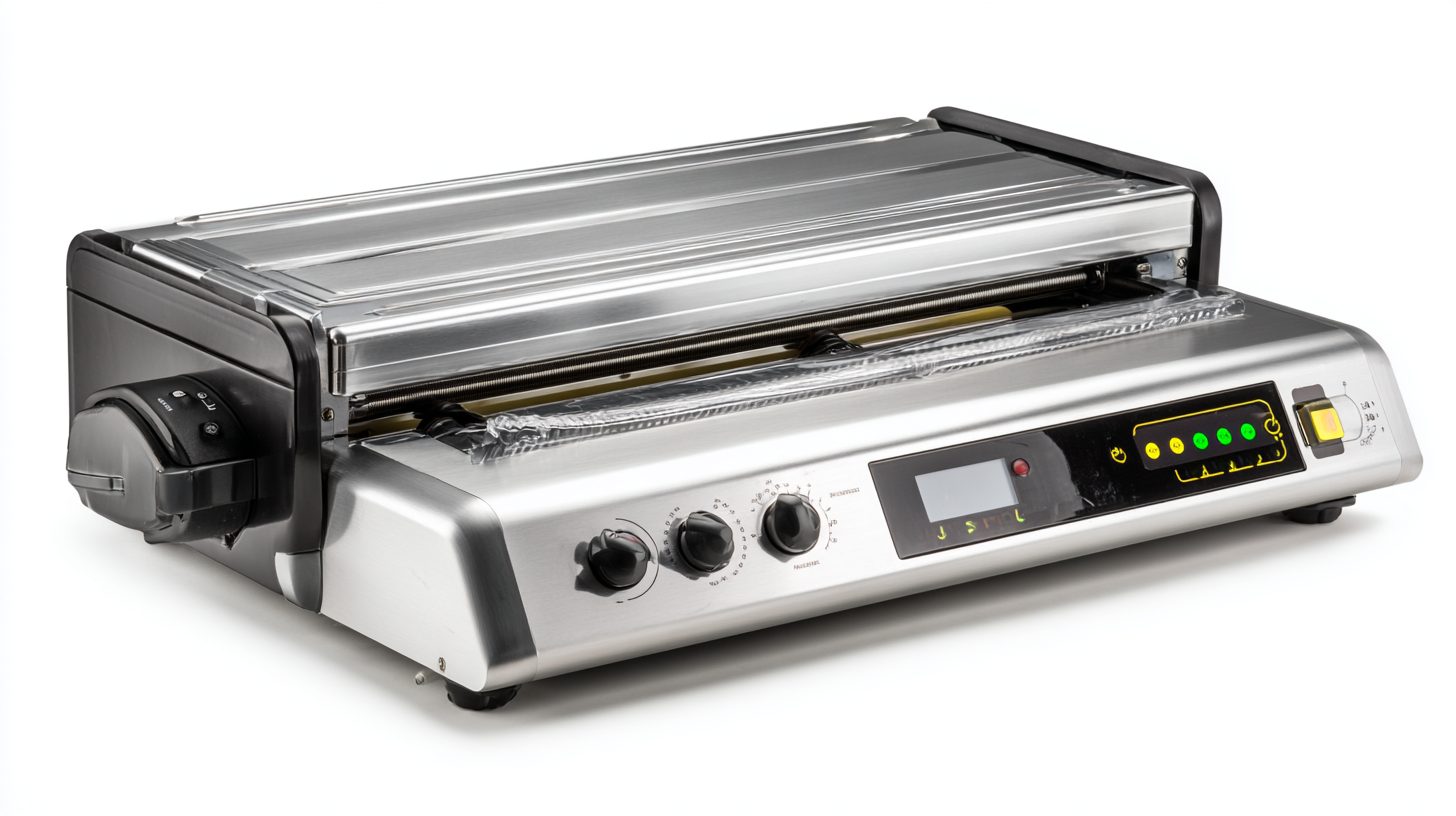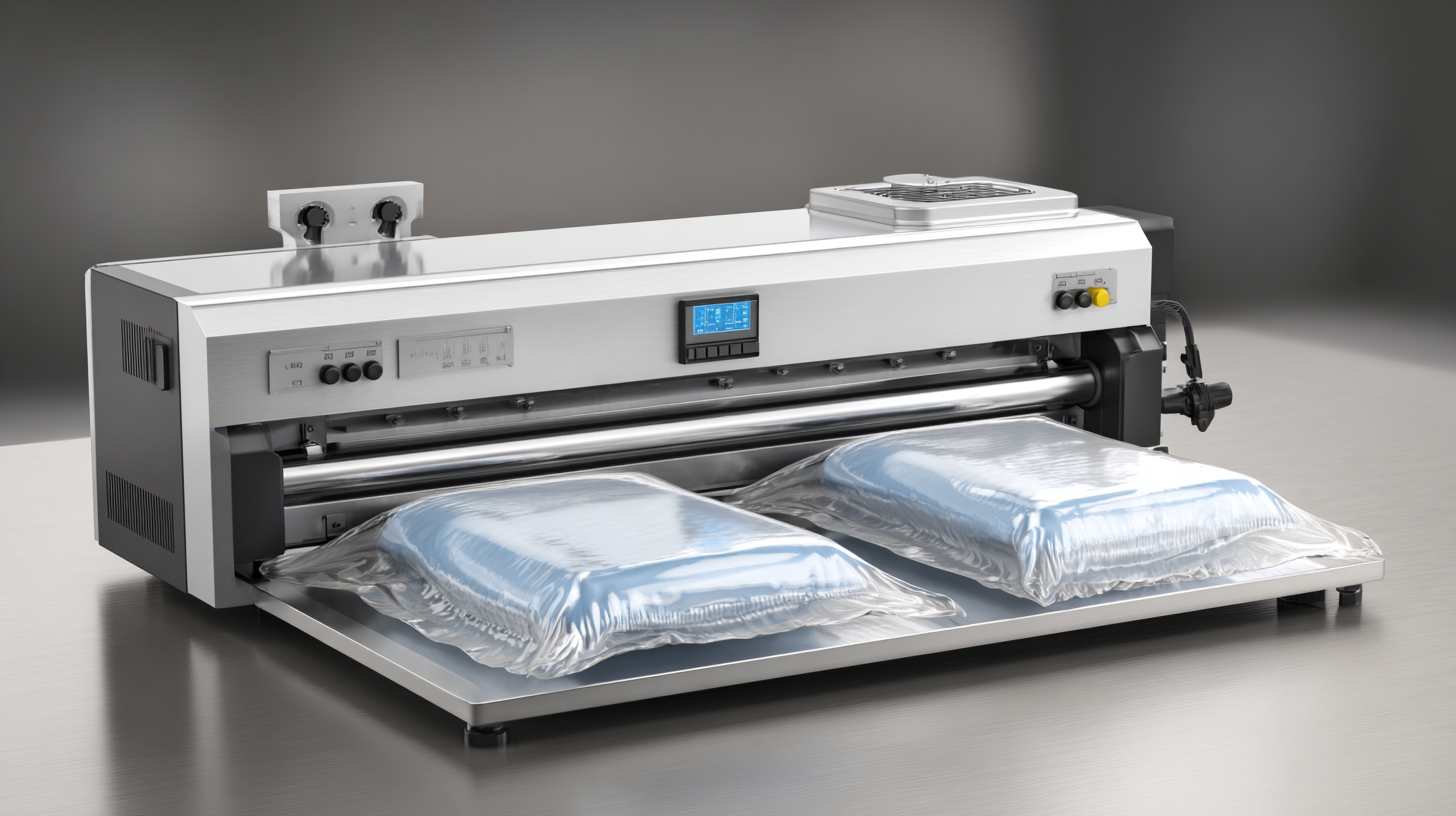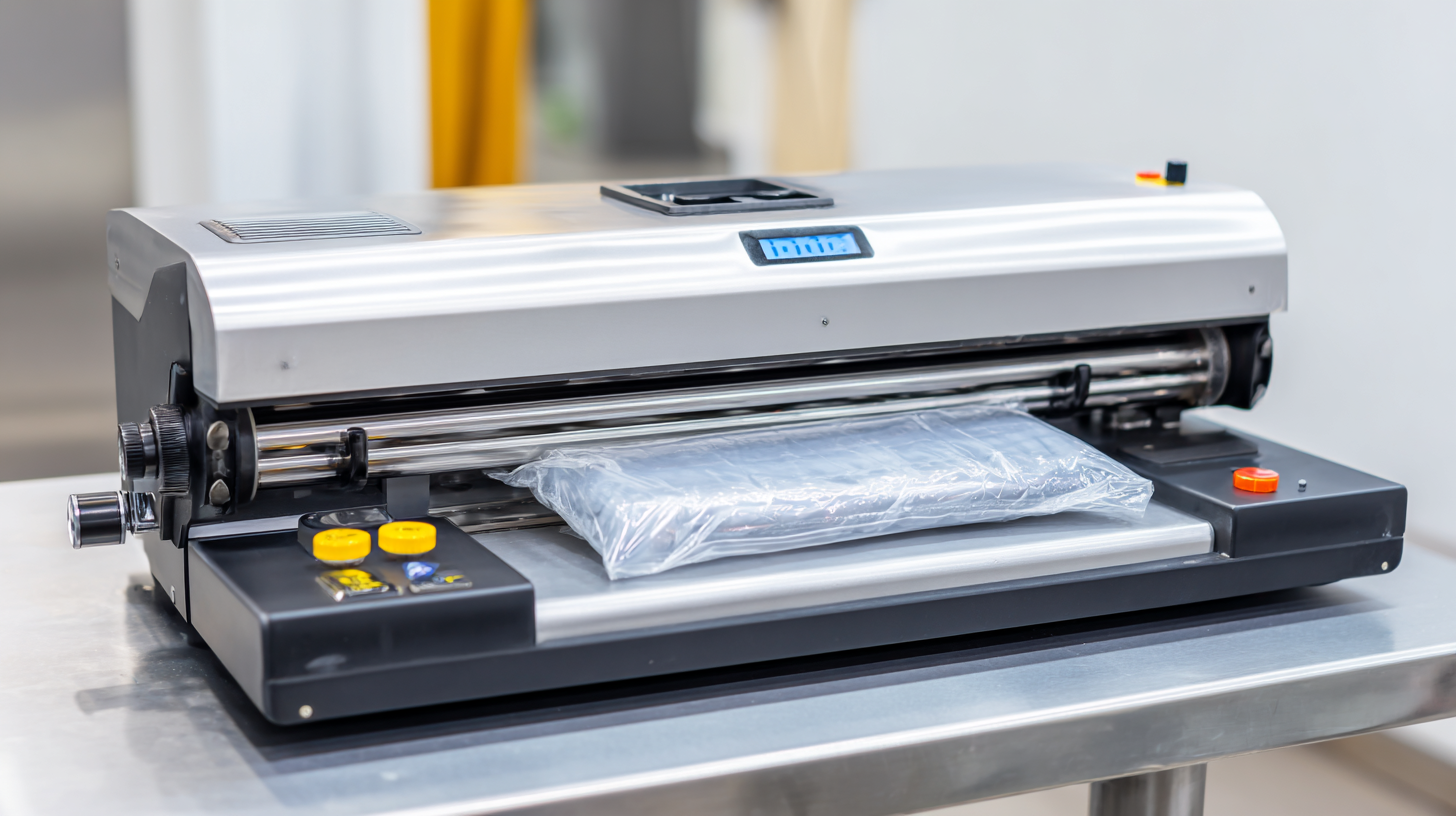Leave Your Message
As the demand for food preservation and efficient packaging continues to rise, the vacuum packing machine industry is witnessing significant growth. According to a recent report by MarketsandMarkets, the global vacuum packing market is projected to reach USD 4.4 billion by 2025, with a compound annual growth rate (CAGR) of 5.2% from 2020 to 2025. This surge is driven by increased consumer preference for convenience and longer shelf life, especially in the context of food safety and waste reduction. Furthermore, the versatility of vacuum packing machines across various sectors, including food, pharmaceuticals, and electronics, underscores their pivotal role in optimizing operations and enhancing profitability. In this blog, we will explore future market trends for the best vacuum packing machines, highlighting their benefits and providing insights on how to make the most of your investment in this essential packaging technology.

When looking for a high-performance vacuum packing machine, several key features are essential to ensure you make a wise investment. One of the primary factors to consider is the machine's sealing strength and efficiency. A robust seal plays a critical role in preserving the freshness and extending the shelf life of the packed items. Opt for machines that offer adjustable sealing times and temperatures to cater to various materials and thicknesses. Another important aspect is the vacuum power; machines with higher vacuum strength reduce air pockets more efficiently, which is vital for effective preservation.
Additionally, versatility and ease of use are crucial elements in a vacuum packing machine. It is beneficial to choose a unit that can handle different types of packaging materials, such as plastic and foil, as well as various shapes and sizes of food items. Features like automatic operation, user-friendly controls, and maintenance indicators can significantly enhance the user experience. Lastly, consider the durability and warranty of the machine, as high-quality construction will lead to long-term performance and better ROI, ensuring your investment pays off in the long run.
Emerging technologies are continuously transforming the landscape of vacuum packing solutions, making them not only more efficient but also more versatile. As businesses look to optimize their investment in vacuum packing machines, advancements such as smart sensors and IoT integration are proving to be game-changers. These technologies allow for real-time monitoring and adjustment of packing conditions, ensuring optimal performance and product integrity.
To maximize your investment, consider implementing machines that feature energy-efficient designs. These models reduce power consumption without compromising on performance. Additionally, look for machines equipped with advanced sealing technology, which can significantly extend the shelf life of your products and reduce waste.
Another critical factor is the adaptability of the machine to handle various packaging materials. Investing in a vacuum packing machine that can cater to diverse products, from delicate items to bulk goods, will provide you with the flexibility needed to stay competitive. Always stay informed about the latest innovations and consider reaching out to manufacturers for demonstrations to make the most informed choices for your business.
This bar chart illustrates the projected market growth of vacuum packing machines from 2021 to 2025. The increasing trends indicate a growing demand for vacuum packing solutions driven by emerging technologies and innovations in the industry.
In the evolving landscape of packaging, understanding the cost-benefit analysis of investing in vacuum packing machines is crucial, particularly in the booming meat, poultry, and seafood sectors. The meat packaging market alone is projected to reach USD 21.1 billion by 2034, up from USD 14.1 billion in 2024, reflecting a compound annual growth rate (CAGR) of 4.1%. This rapid growth underscores the rising demand for effective and safe storage solutions, driving innovations in vacuum packing technology.
The plastic vacuum forming market, with a reported size of USD 4.79 billion in 2023, is expected to grow at a CAGR of 6.15% from 2024 to 2030, suggesting a robust investment opportunity for those looking to optimize their packaging processes. By integrating advanced vacuum packing machines, businesses can significantly enhance food safety and extend product shelf life, making these investments not just advantageous but essential in maintaining competitive advantage in the market. The importance of a thorough cost-benefit analysis cannot be overstressed; understanding the financial implications of these technologies will help manufacturers and distributors make informed decisions that align with industry trends and consumer demands.
| Feature | Cost ($) | Benefit (Years) | ROI (%) | Market Trend |
|---|---|---|---|---|
| Compact Design | 200 | 5 | 150% | Growing Demand |
| Multi-chamber Vacuum | 500 | 10 | 200% | Higher Efficiency |
| Automatic Bag Detection | 350 | 7 | 150% | Innovation in Technology |
| Energy-efficient Models | 400 | 8 | 175% | Sustainability Focus |
| User-friendly Interface | 250 | 4 | 120% | Market Standardization |
Maintaining and optimizing vacuum packing equipment is essential for businesses seeking to extend the lifespan of their machinery and improve operational efficiency. According to a report by MarketsandMarkets, the vacuum packaging market is expected to reach USD 30.20 billion by 2025, indicating significant growth and competition in this industry. To capitalize on this trend, companies must focus on best practices for equipment maintenance. Regular inspections, timely replacement of worn parts, and adherence to manufacturer guidelines can reduce downtime and prevent costly repairs.
Additionally, leveraging technology can enhance the performance of vacuum packing machines. Implementing predictive maintenance, as highlighted in a study by Deloitte, can reduce equipment failure rates by up to 25%, thereby optimizing production flow. Companies can also invest in training staff to ensure they are proficient in operating and maintaining the equipment. This not only boosts the efficiency of the vacuum packing process but also leads to safer working conditions. By prioritizing these practices, businesses can make informed decisions regarding their investments in vacuum packing technology while achieving a competitive edge in a growing market.

The global vacuum packing machine market is witnessing significant growth, driven by increasing consumer demand for convenience and food preservation. As the smart home market is projected to reach a value of $121.59 billion by 2024 and continue to expand robustly, vacuum packing machines are becoming a vital component in modern kitchens. With a CAGR anticipated to soar well into the next decade, the demand for innovative vacuum packing solutions that cater to busy lifestyles is on the rise.

Moreover, the global market for dehydrated food is also poised for growth, increasing from $176.54 million in 2025 to an estimated $1.15 billion by 2033, with a steady CAGR of 5.4%. This aligns perfectly with the rising popularity of vacuum packing, as it plays a crucial role in enhancing the shelf life and quality of dehydrated products, appealing to health-conscious consumers. Therefore, investing in high-quality vacuum packing machines not only meets the current market demand but also positions businesses to thrive in an evolving landscape where food quality and convenience are paramount.
